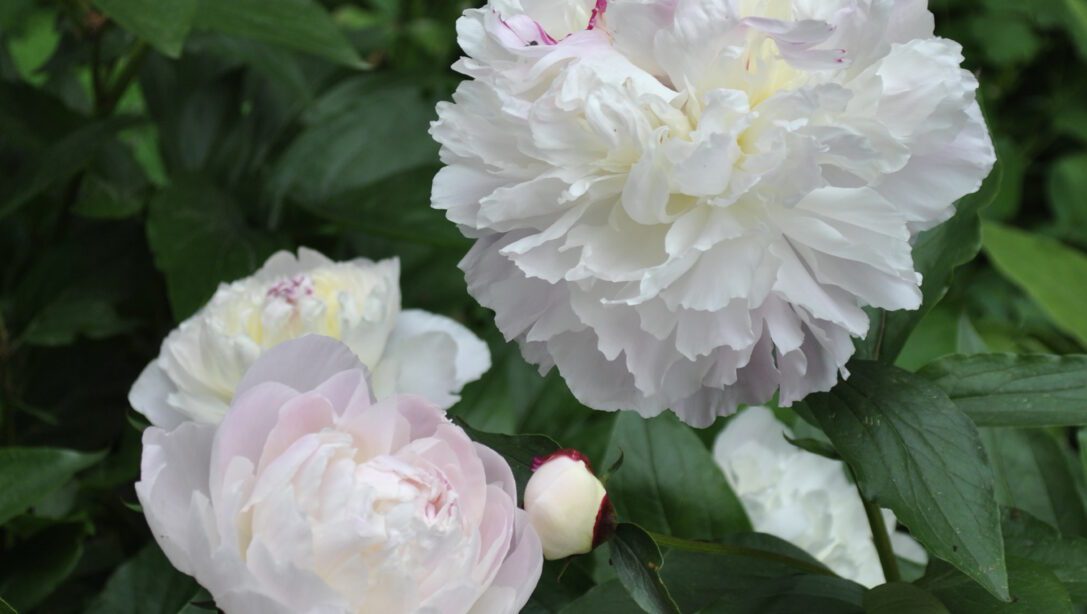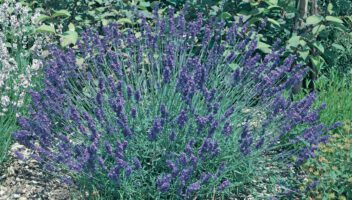Peonies are distinguished plants known for their brief but beautiful bloom. All but two species are native to Europe and Asia, and are a common feature in sophisticated herbaceous borders. They appear in a variety of colours such as cream, pink and yellow often with a spicy scent and a selection of loosely crammed petals.
Easy to take care of and to grow there are varieties to suit a range of situations, from baskets to beds and displays. They are a rewarding addition to any garden.
View our collection of plantsTop Varieties
Paeonia lactiflora ‘Bowl of Beauty’
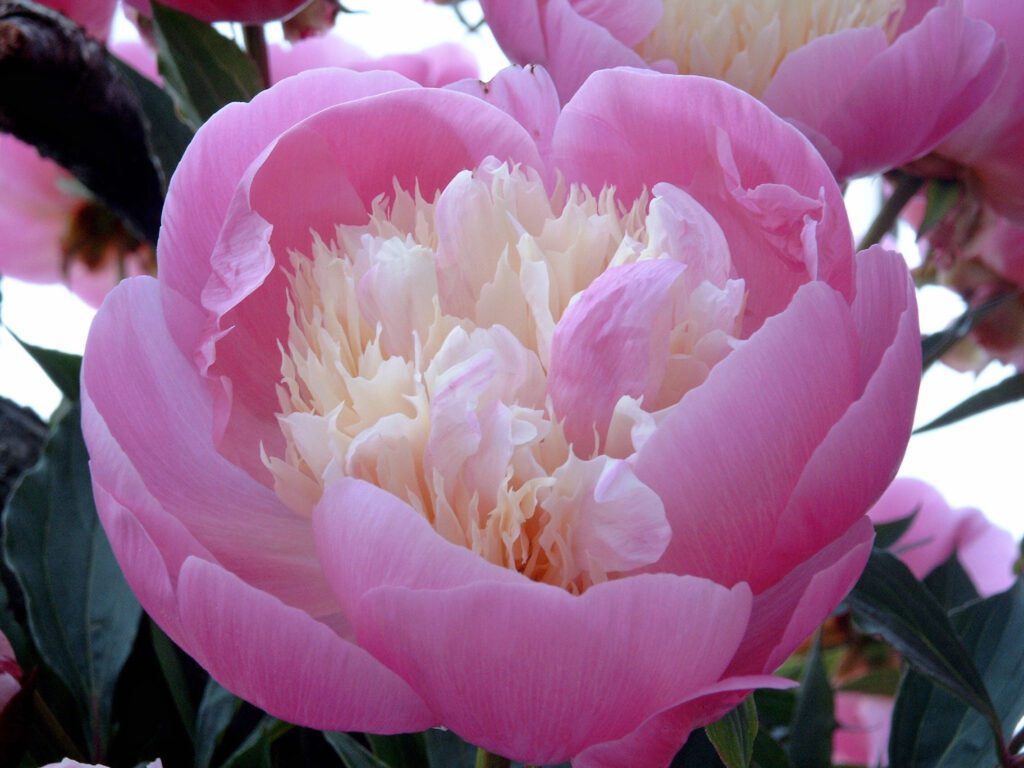
‘Bowl of Beauty’ has spectacular cupped cerise-pink flowers with a central core of creamy white petaloids, embellished with a sweet fragrance. It is the perfect choice to grow as the focal point for a large herbaceous border.
| Flowering time | Early summer |
| Sun requirements | Full sun to partial shade |
| Soil | Moist, well-drained soils – mildly acidic to neutral pH |
| Hardiness | Fully hardy in all of the UK |
| Size | Can grow to 80cm height x 100cm width |
Paeonia lactiflora ‘Doctor Alexander Fleming’
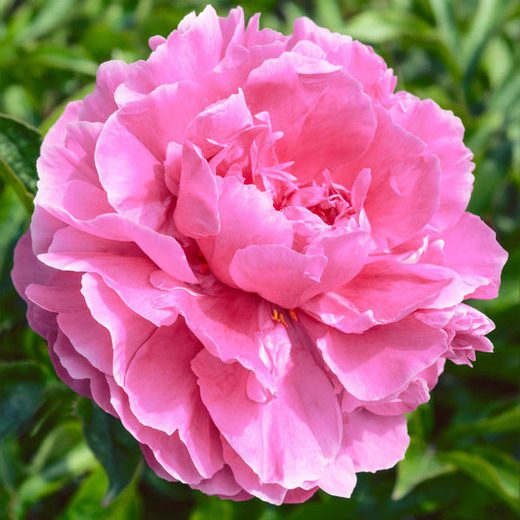
One of Europe’s most popular peonies, ‘Doctor Alexander Fleming’ has a dazzling bloom and is fabulously fragrant. It produces large, deep pink double flowers, which then fade to a paler rose towards the edges. Thanks to a large number of side buds, it has an extended blooming season. As well as being beautiful in a garden, they also make enchanting cut flowers.
| Flowering time | Summer |
| Sun requirements | Full sun to partial shade |
| Soil | Medium moist, or well-drained soils – prefers neutral pH |
| Hardiness | Fully hardy in all of the UK |
| Size | Can reach 70cm height x 100cm width |
Paeonia lactiflora ‘Karl Rosenfield’
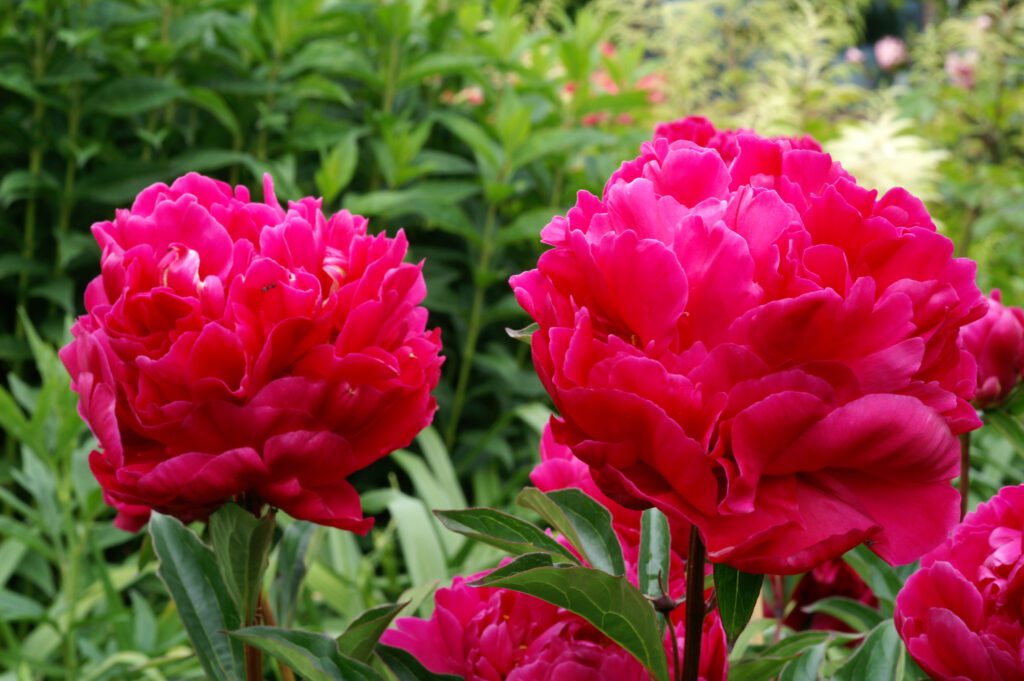
Considered by many to be one of the best red double peonies ‘Karl Rosenfield’ is certainly an eye catching flower! A plethora of large, scarlet-red double blossoms emerge above the large foliage. They are a late midseason peony that look fabulous in borders and beds or as cut flowers.
| Flowering time | Late spring to early summer |
| Sun requirements | Full sun to partial shade |
| Soil | Moist, well-drained soils – any pH (preferably weak) |
| Hardiness | Fully hardy in all of the UK |
| Size | Can reach 80cm height x 100cm width |
Paeonia lactiflora ‘Miss America’
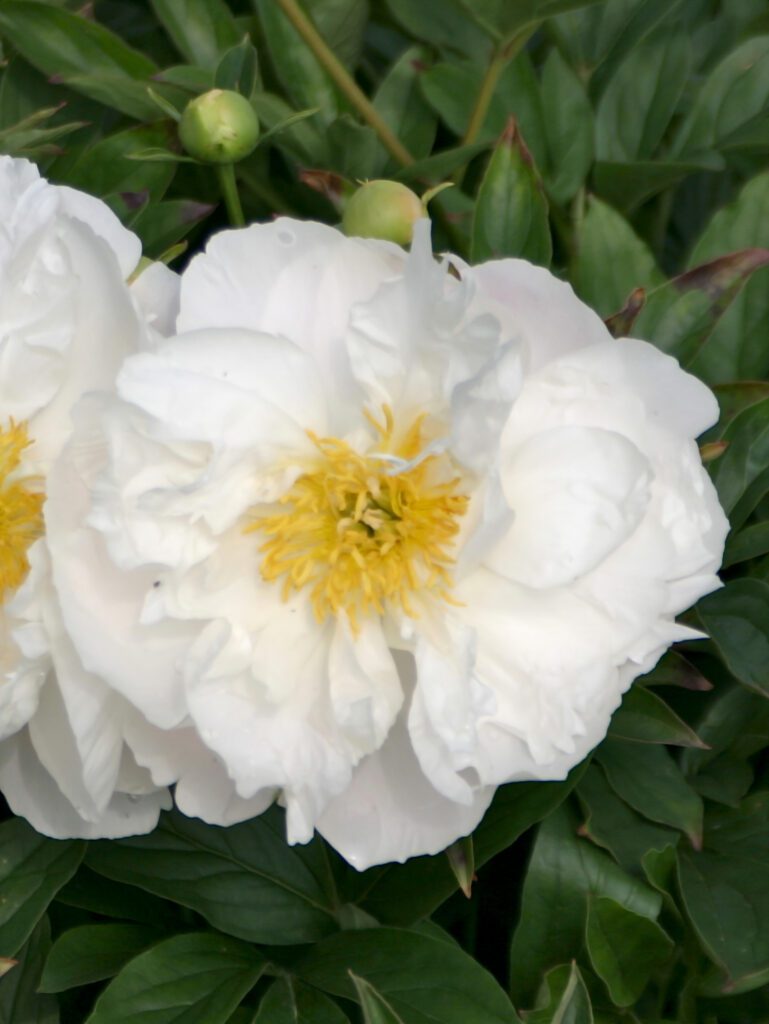
‘Miss America’ is a luxuriant perennial with glossy green leaves, divided into oval leaves and lance shaped leaflets. These delightfully fragrant white flowers with amber stamens open from soft rose buds. As it is an early midseason peony no staking is required. Miss America makes excellent cut flowers because it has a long vase life when cut from the bud.
| Flowering time | Late spring to early summer |
| Sun requirements | Full sun to partial shade |
| Soil | Moist, well-drained soils – any pH |
| Hardiness | Fully hardy in all of the UK |
| Size | Can reach 90cm height x 90cm width |
Paeonia lactiflora ‘Neon’
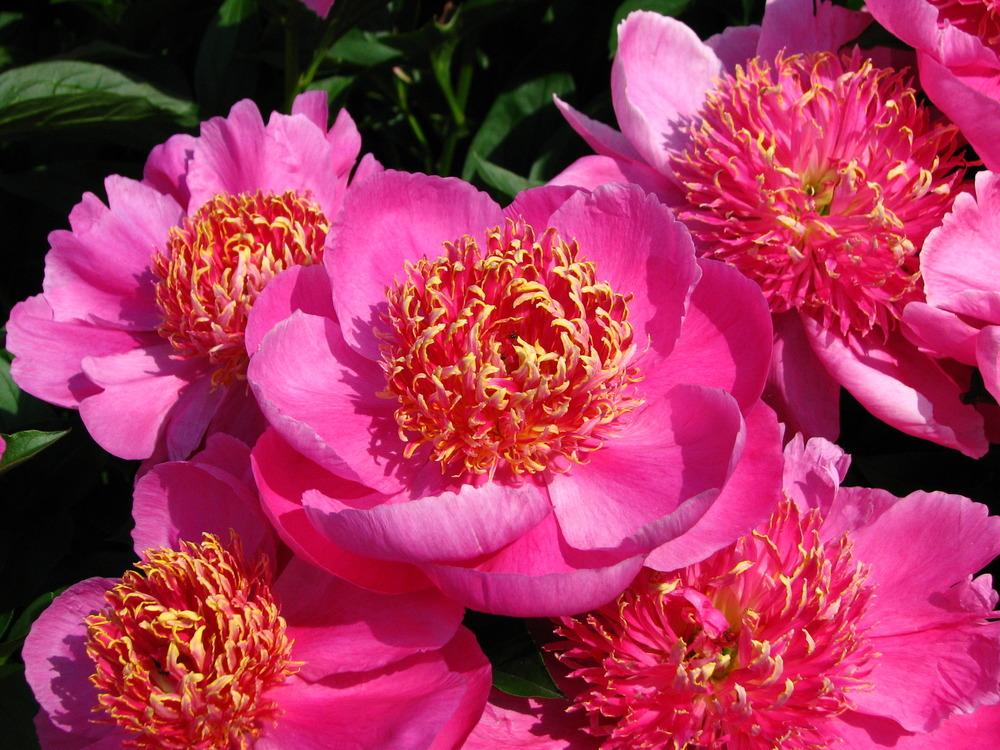
An upright and bushy herbaceous perennial, the Japanese Peony ‘Neon’, produces cheerful lavender pink flowers. These attractive blooms are mildly fragrant and beautifully tipped in gold. They are a useful plant to have in a garden as they attract many butterflies and are the perfect specimen plant for city or cottage gardens.
| Flowering time | Late spring to early summer |
| Sun requirements | Full sun to partial shade |
| Soil | Medium moisture, well-drained soils – weak acid/alkaline pH |
| Hardiness | Fully hardy in all of the UK |
| Size | Can reach 90cm height x 100cm width |
Paeonia lactiflora ‘Pecher’
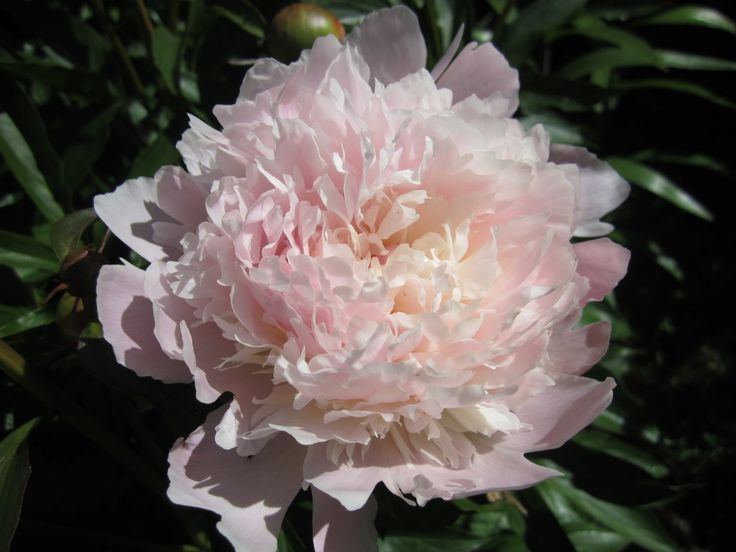
The very floriferous ‘Pecher’ is known for its sweet fragrance and distinct bloom shape. The double flowers open from soft pink buds to stunning cream, saucer shaped blossoms, intertwined with dark green foliage, tinged red in spring. They are the ideal plants for borders and beds and help to create a sense of effortless elegance in a garden.
| Flowering time | Early summer |
| Sun requirements | Full sun to partial shade |
| Soil | Moist, well-drained soils – any pH |
| Hardiness | Fully hardy in all of the UK |
| Size | Can reach 100cm height x 100cm width |
Paeonia lactiflora ‘Peter Brand’
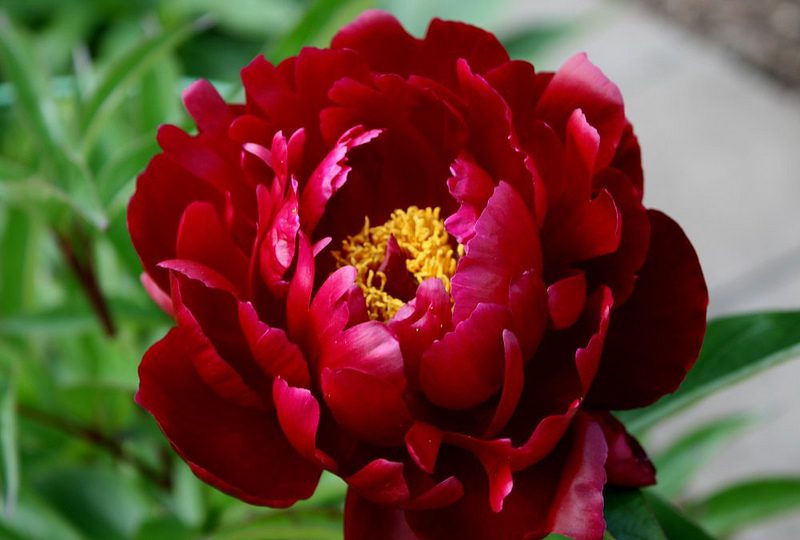
A sought-after peony, ‘Peter Brand’ produces deep red flowers on strong stems, with a clear yellow stamen at the heart. They are very good quality cut flowers, but also work well as planted in a perennial border or bed.
| Flowering time | Summer |
| Sun requirements | Full sun to partial shade |
| Soil | Moist, well-drained – any weak pH |
| Hardiness | Fully hardy in all of the UK |
| Size | Can reach 100cm height x 100cm width |
Paeonia lactiflora ‘Shirley Temple’
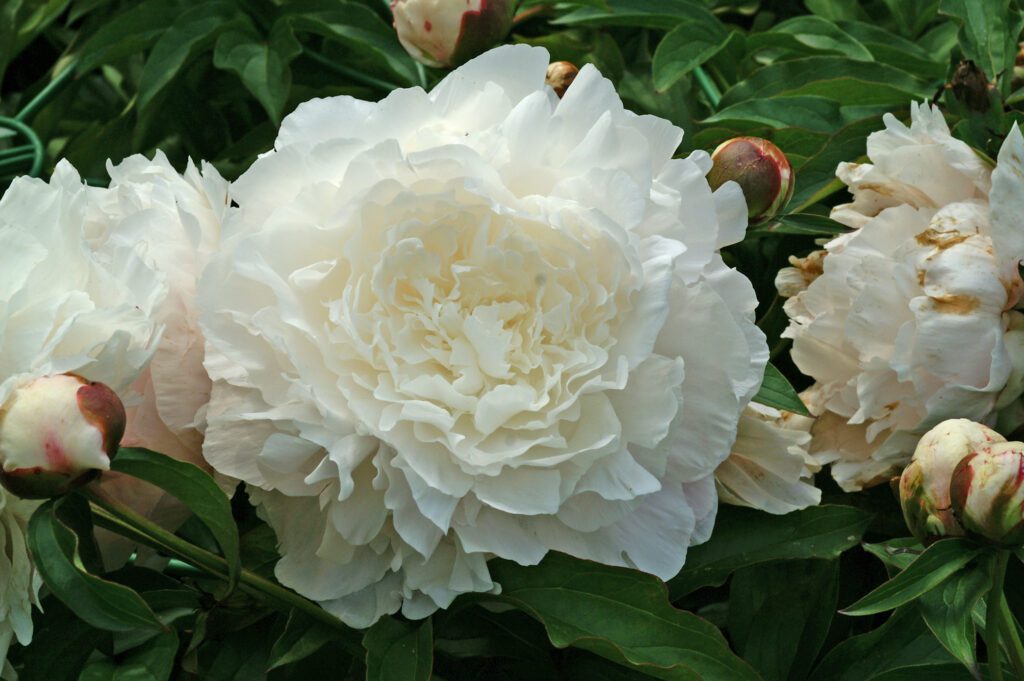
‘Shirley Temple’ is subtly fragrant, with double flowers that open from soft pink buds into large blush pink ruffled petals that elegantly fade to ivory white with age. This midseason peony is weather resistant and will remain vigorously blooming until frost. It is an adaptable plant and is a faultless addition to any garden or border.
| Flowering time | Early summer |
| Sun requirements | Full sun to partial shade |
| Soil | Medium moisture, well-drained soils – any pH |
| Hardiness | Fully hardy in all of the UK |
| Size | Can reach 80cm height x 100cm width |
Planting
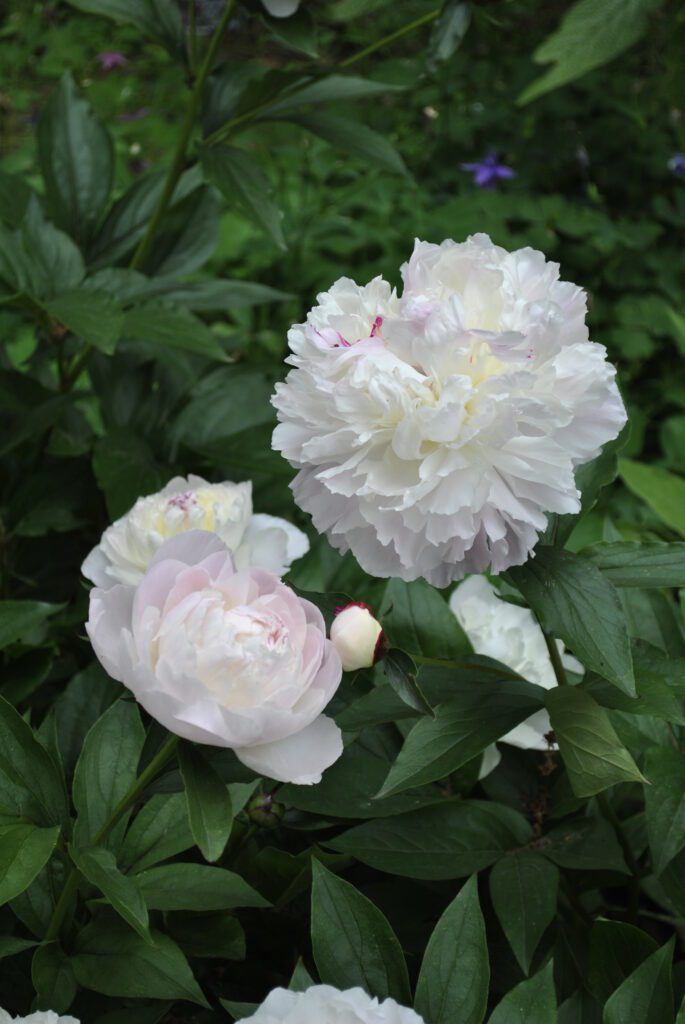
All peonies require moist but well drained soil and preferably full sun. These conditions provide support for varieties with large flowers. Bare root peonies should be planted as soon as they arrive. Overall, peonies are best planted in autumn or spring; with potted plants in late spring and bare root divisions in late autumn. Make sure they are not planted too deeply into the soil, as this will yield poor results. Before planting, incorporate plenty of organic matter (well rotted). Using a balanced fertiliser in spring is recommended to ensure the maximum number of flowers. Many peonies have very large flower heads so it’s useful to support the stems by staking.
Watering
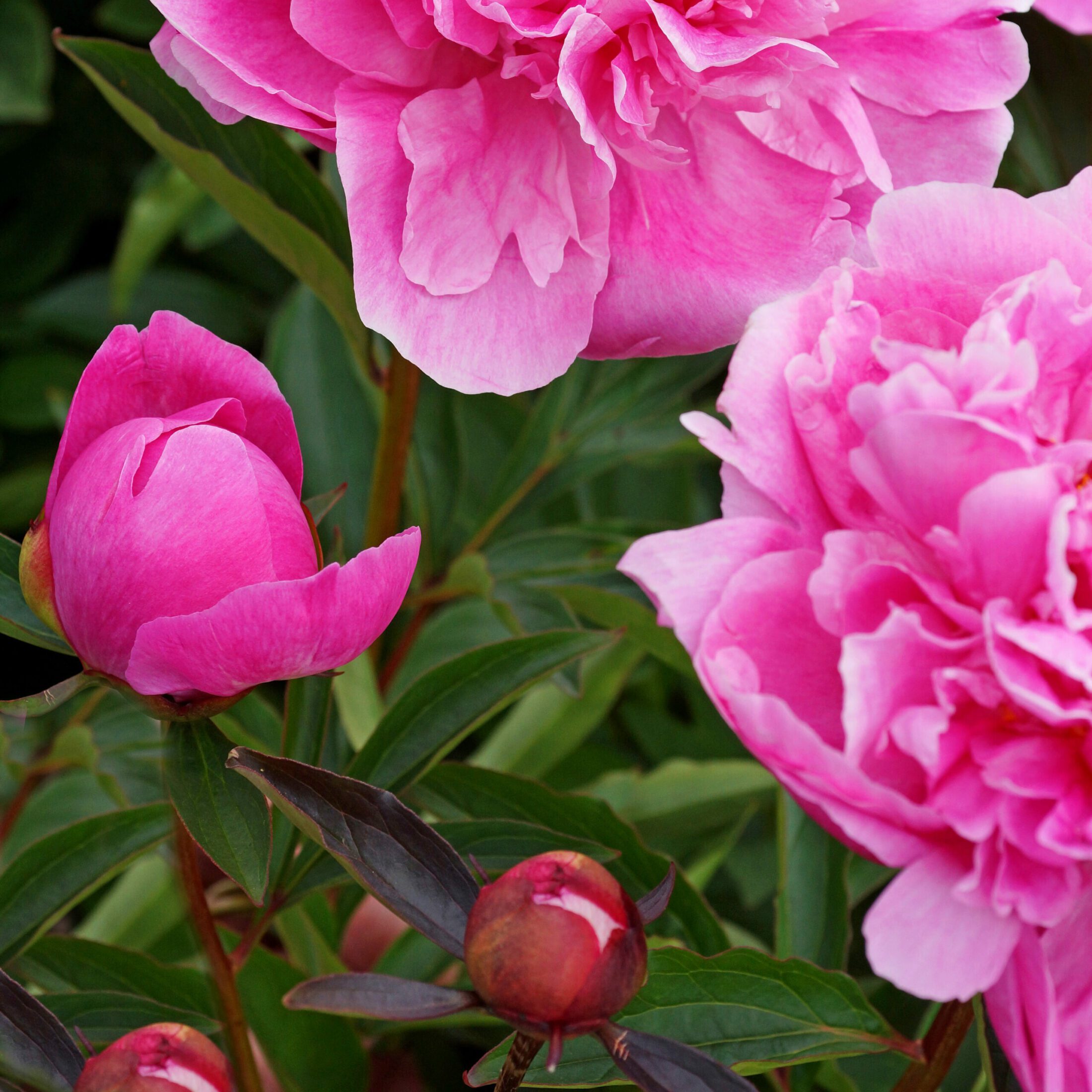
Water regularly in dry spells during the first year to assist in establishment, especially if planted in spring or summer. Established peonies are deep rooted and, after the first year, should no longer require routine watering. In cases of over or underwatering the plants will wilt and the leaves will turn brown so ensure that it is identified which has occurred before continuing. They need well drained soil to thrive and grow.
Pruning
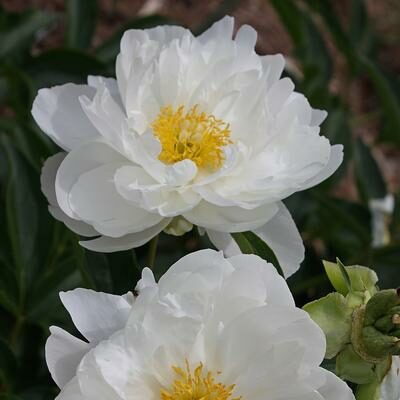
Peonies are herbaceous and the foliage dies back in autumn. It is best to cut it back to ground level to reduce the risk of infection from peony wilt disease. Sometimes no pruning is required, depending on how overgrown or wilted the plant becomes.
Complementary Planting Ideas
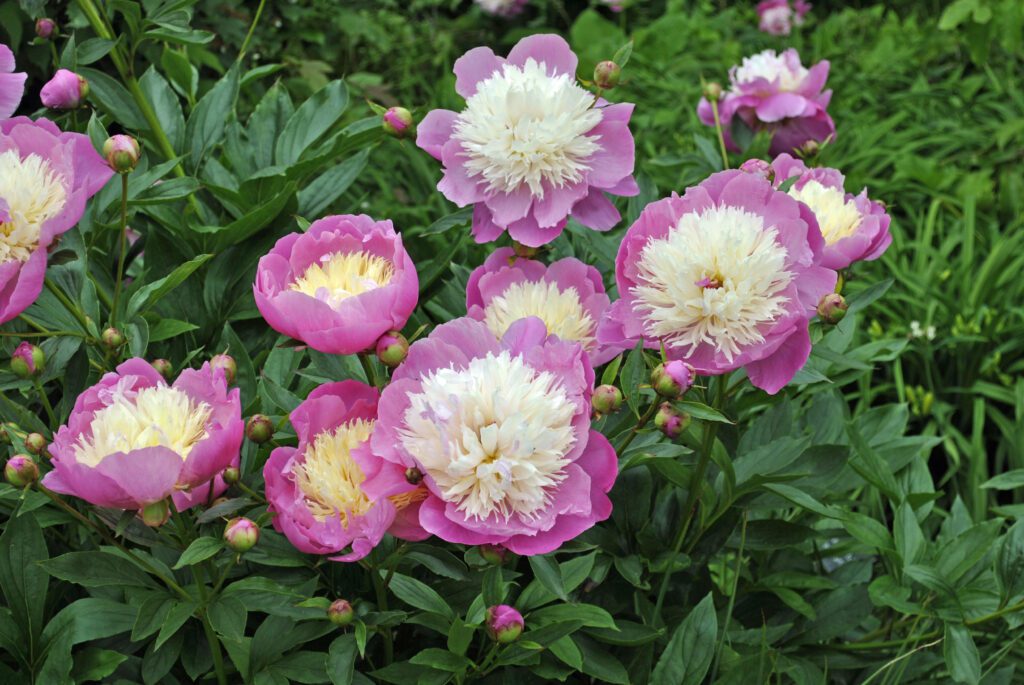
Bearded irises are the perfect complementary flower for the majority of peonies, as they have contrasting colours. Roses often mirror the ruffles of the peony flowers, and can look stunning in an arrangement if placed well. Miniature rhododendrons are also a popular choice for companion flowers, but they must be well maintained as things can quickly get out of hand if they are not cared for properly. Evergreen azaleas and viburnums provide a muted background for the peony flowers to showcase their luscious bloom. Any striking perennial, such as alliums, foxgloves or hydrangeas provide a complementary texture or shape to the peony, resulting in a multi layered border of display. For a more muted display; lavender or geraniums are also popular as they provide different layers of colour. If using an early spring peony, daffodils can also provide decorative companionship.
Find out more about the complementary hydrangeas here.
Peony Fact
If cared for properly, peonies can live to be 100 years old and still produce flowers. Certain peonies have an extended bloom period and can produce as many as 50 blooms in a single season, due to their ability to produce primary and secondary blooms.


